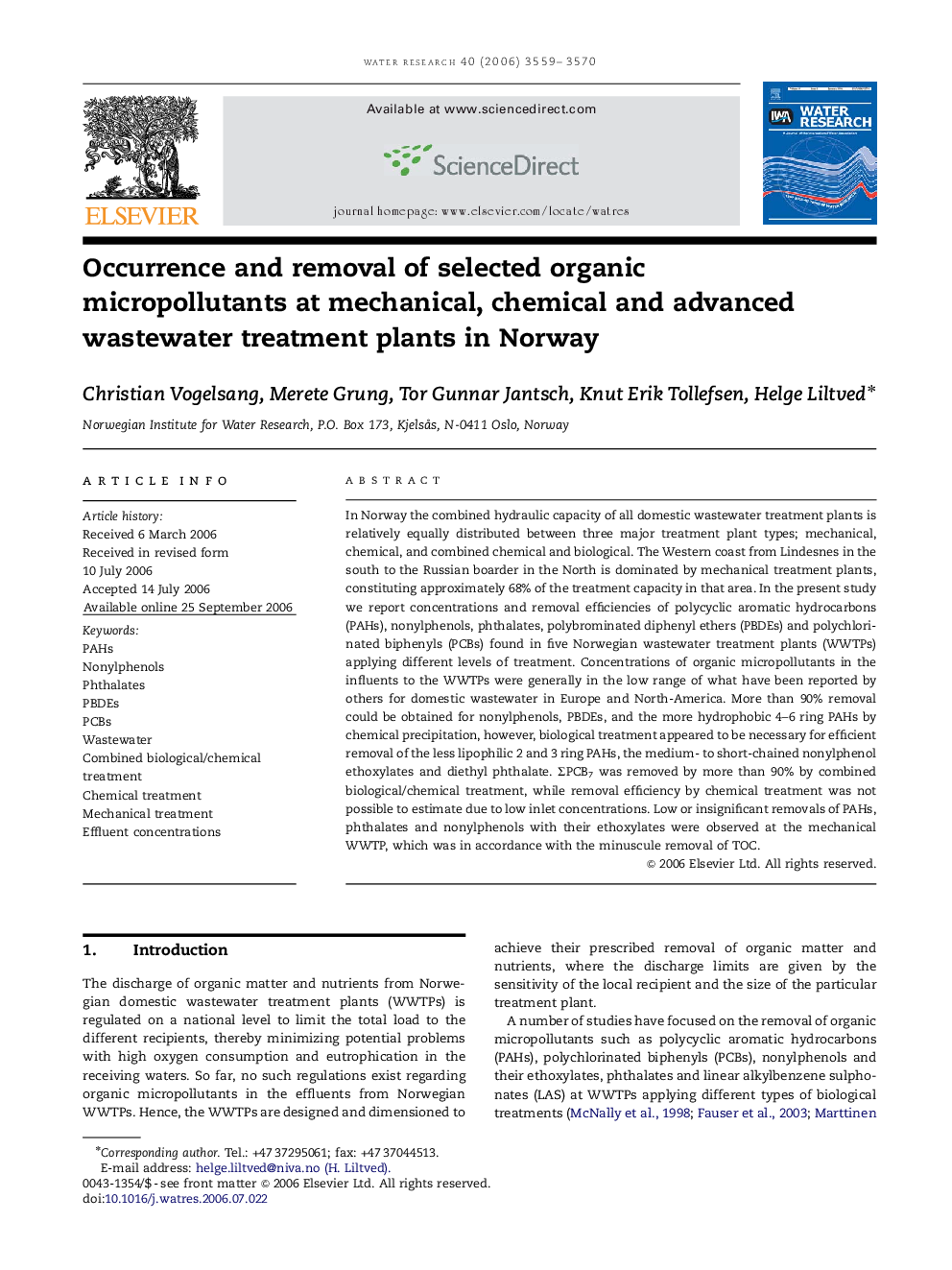| Article ID | Journal | Published Year | Pages | File Type |
|---|---|---|---|---|
| 4484529 | Water Research | 2006 | 12 Pages |
In Norway the combined hydraulic capacity of all domestic wastewater treatment plants is relatively equally distributed between three major treatment plant types; mechanical, chemical, and combined chemical and biological. The Western coast from Lindesnes in the south to the Russian boarder in the North is dominated by mechanical treatment plants, constituting approximately 68% of the treatment capacity in that area. In the present study we report concentrations and removal efficiencies of polycyclic aromatic hydrocarbons (PAHs), nonylphenols, phthalates, polybrominated diphenyl ethers (PBDEs) and polychlorinated biphenyls (PCBs) found in five Norwegian wastewater treatment plants (WWTPs) applying different levels of treatment. Concentrations of organic micropollutants in the influents to the WWTPs were generally in the low range of what have been reported by others for domestic wastewater in Europe and North-America. More than 90% removal could be obtained for nonylphenols, PBDEs, and the more hydrophobic 4–6 ring PAHs by chemical precipitation, however, biological treatment appeared to be necessary for efficient removal of the less lipophilic 2 and 3 ring PAHs, the medium- to short-chained nonylphenol ethoxylates and diethyl phthalate. ΣPCB7 was removed by more than 90% by combined biological/chemical treatment, while removal efficiency by chemical treatment was not possible to estimate due to low inlet concentrations. Low or insignificant removals of PAHs, phthalates and nonylphenols with their ethoxylates were observed at the mechanical WWTP, which was in accordance with the minuscule removal of TOC.
